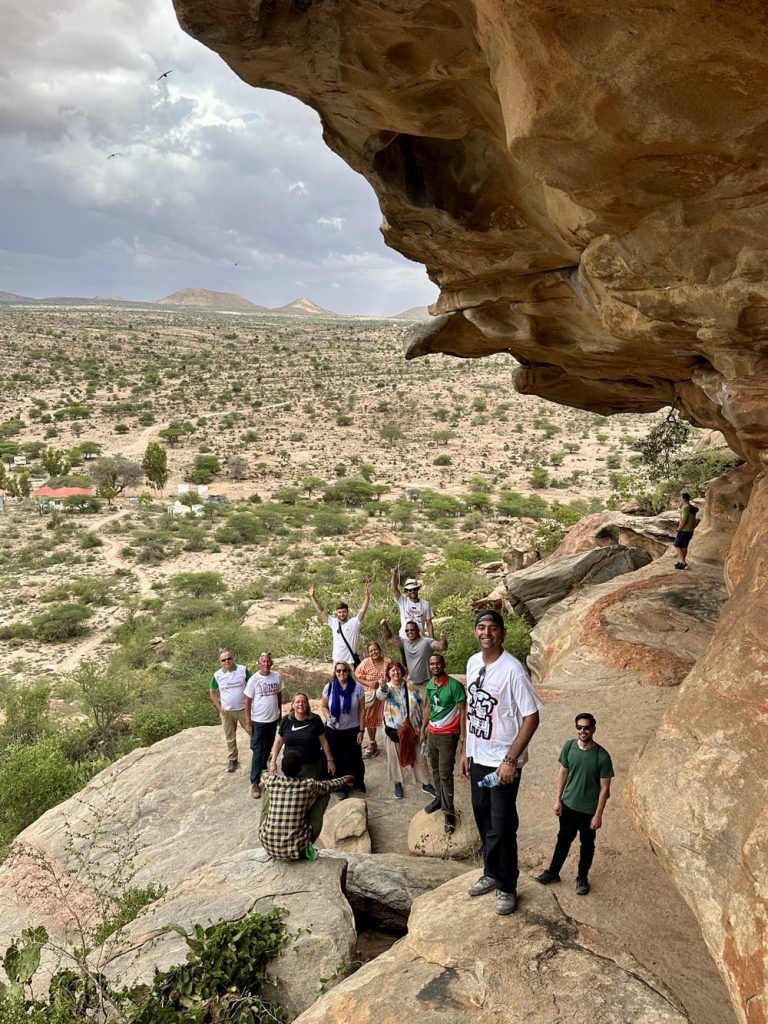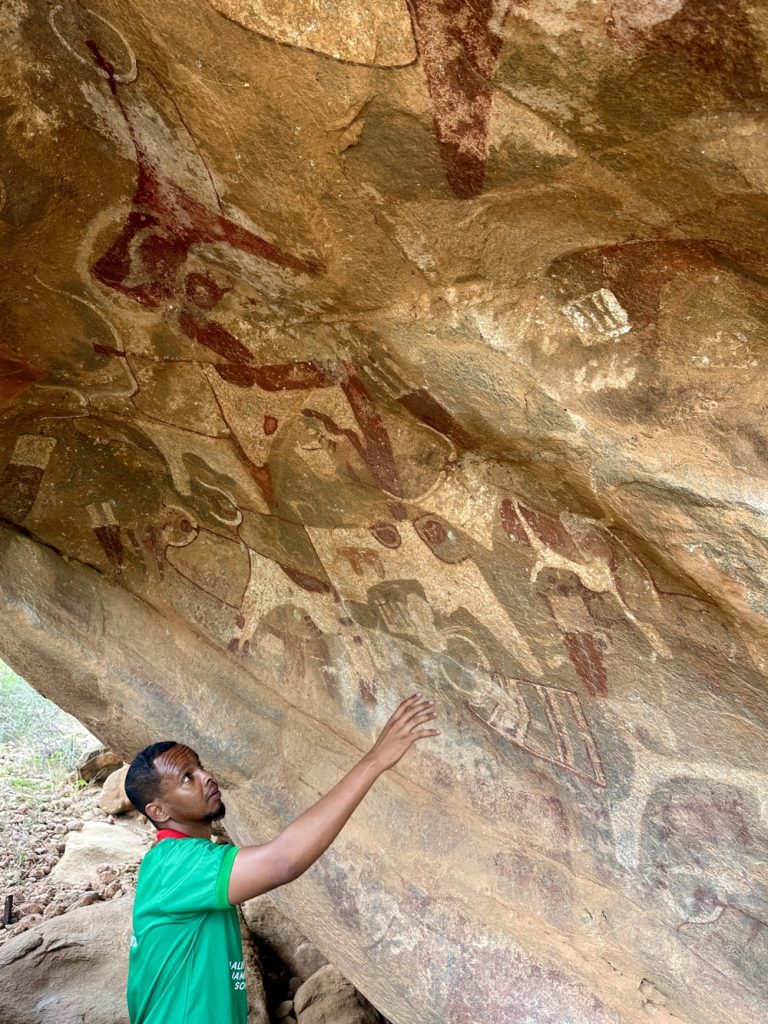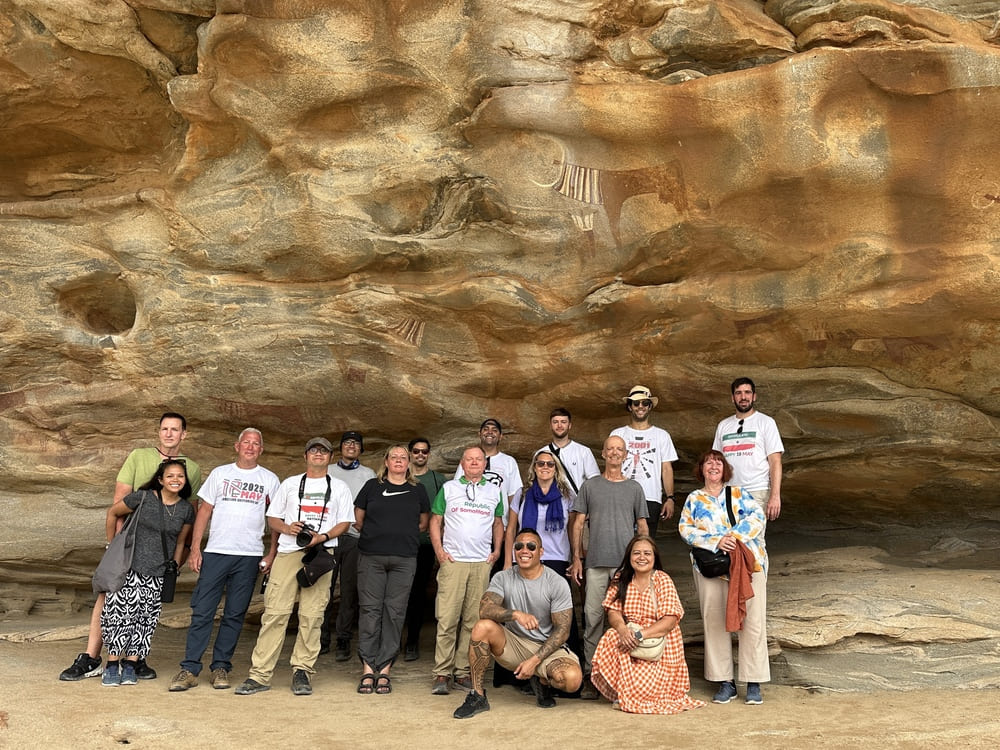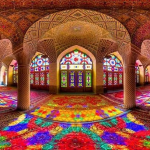Located in Somaliland, about an hour’s drive from Hargeisa, lies one of the most astonishing archaeological discoveries in East Africa: Laas Geel. Virtually unknown to the wider world until the 21st century, this remote site contains some of the best-preserved rock art in the Horn of Africa, if not the entire continent.
Table of Contents
We visit Laas Geel as part of our Horn of Africa Tour, which takes in the contrasting worlds of Somaliland, Djibouti, Eritrea, and Somalia. Our tour coincides with Independence Day in Somaliland and Eritrea’s National Day. Yet despite the geopolitical intrigue, the natural and historical heritage of this region is what often leaves travellers most surprised. And no site embodies that better than Laas Geel.
Where is Laas Geel?
Laas Geel is located in Maroodi Jeex region of Somaliland, approximately 50 kilometres northeast of Hargeisa. The site lies within a granite outcrop on the road to Berbera, surrounded by dry acacia scrub and distant hills. Its remote location and minimal signage mean that it’s practically invisible unless you already know where to look. Once off the main road, a rocky track winds up to a small plateau, where a few goat herders’ trails pass near the site. From there, a short walk brings you to the shelters.
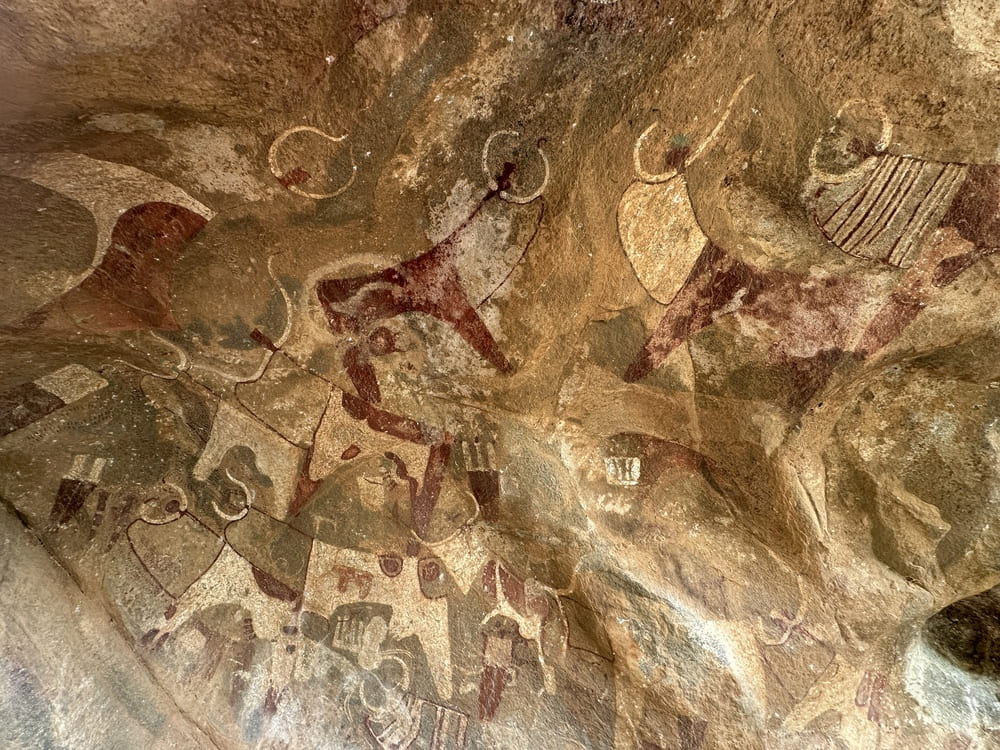

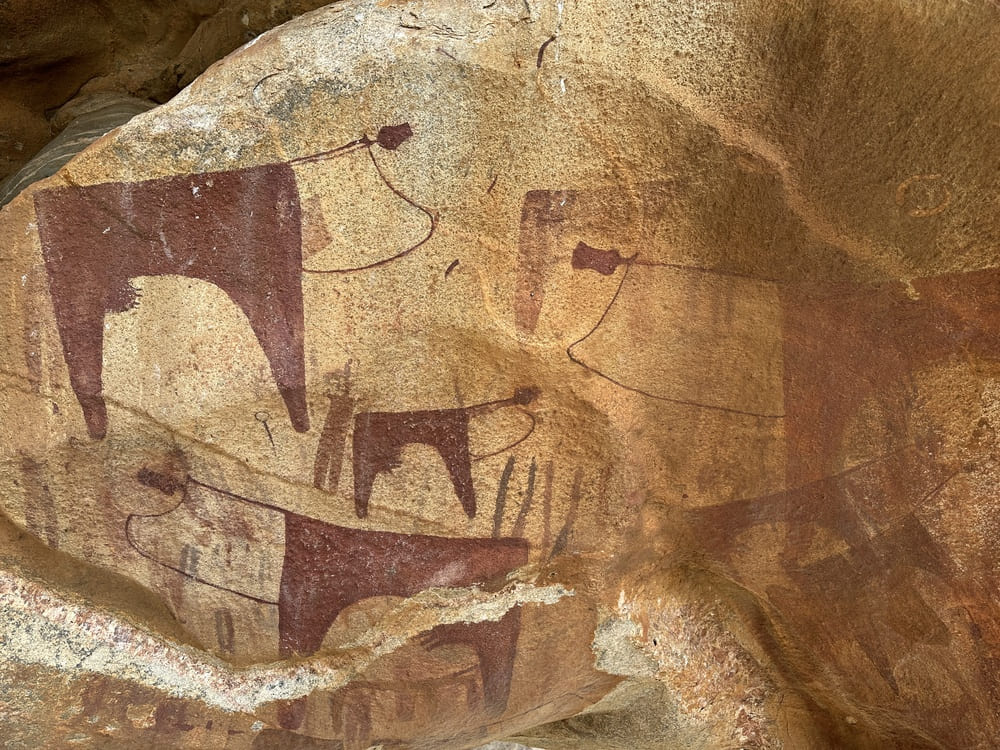
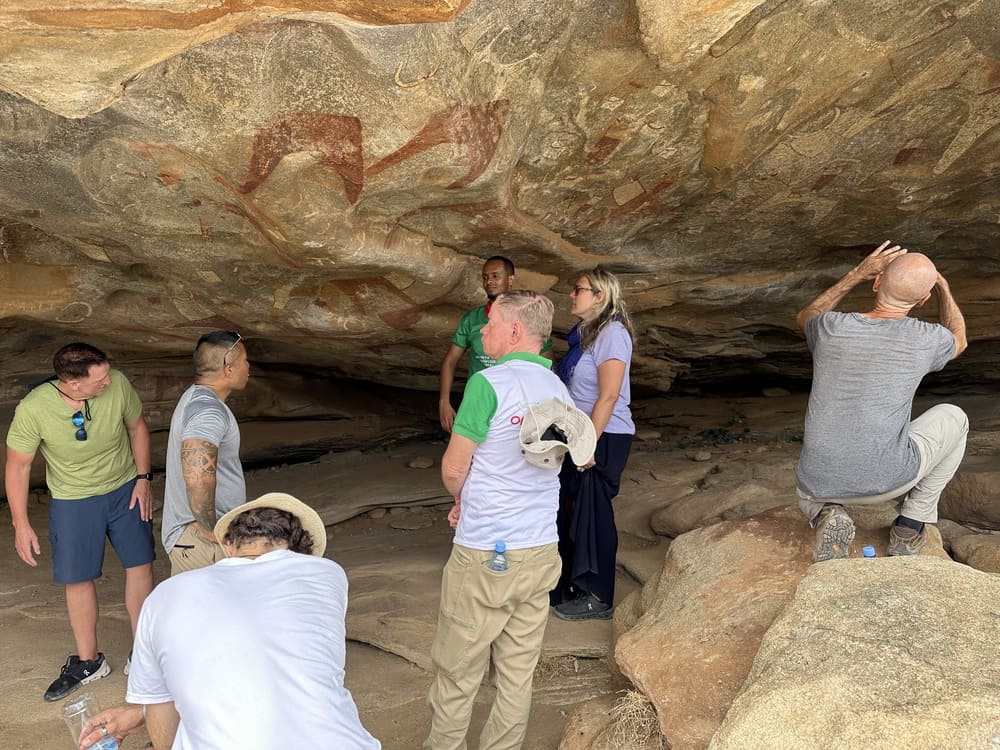
What is Laas Geel?
Laas Geel is a complex of around 20 rock shelters containing prehistoric paintings, many of which are estimated to be between 5,000 and 11,000 years old. The art is painted in natural mineral pigments (iron oxides, kaolin, and other earth-based compounds) which have survived largely intact thanks to their sheltered position under rock overhangs.
What distinguishes Laas Geel from other rock art sites is both its clarity and style. The paintings depict domesticated cattle in ceremonial adornments, often wearing what appear to be decorative robes or cloths on their backs, and sunburst-like halos around their necks. The cattle are usually accompanied by human figures, sometimes standing with arms raised or in poses that suggest ritual activity. The proportions and colouring are deliberate and stylised, with a remarkable use of line and symmetry for a period long before written language or codified religion.
The presence of domesticated long-horned cows and dogs alongside humans implies a pastoralist society, likely pre-dating the advent of settled agriculture in the region. This hints at a thriving, mobile population who had already established deep cultural and symbolic relationships with livestock.
In total, Laas Geel may represent one of the oldest known examples of cattle cult iconography in the Horn of Africa. Unlike more abstract or geometric art seen in the Sahara, the scenes at Laas Geel are narrative and stylised with a degree of intention rarely seen in prehistoric rock art.
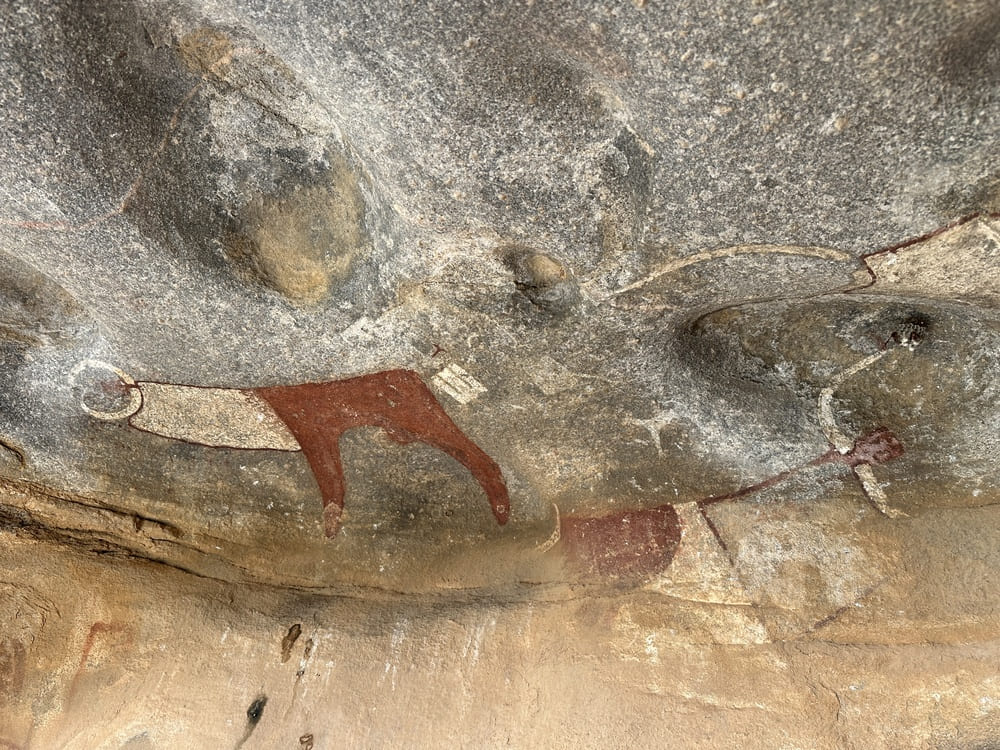
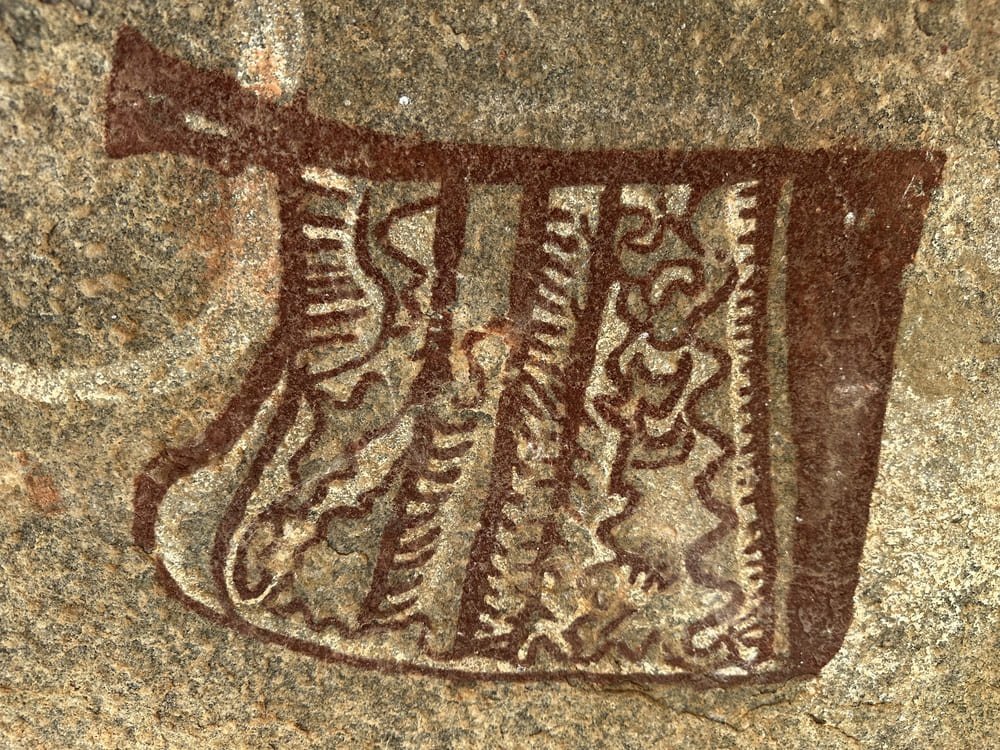
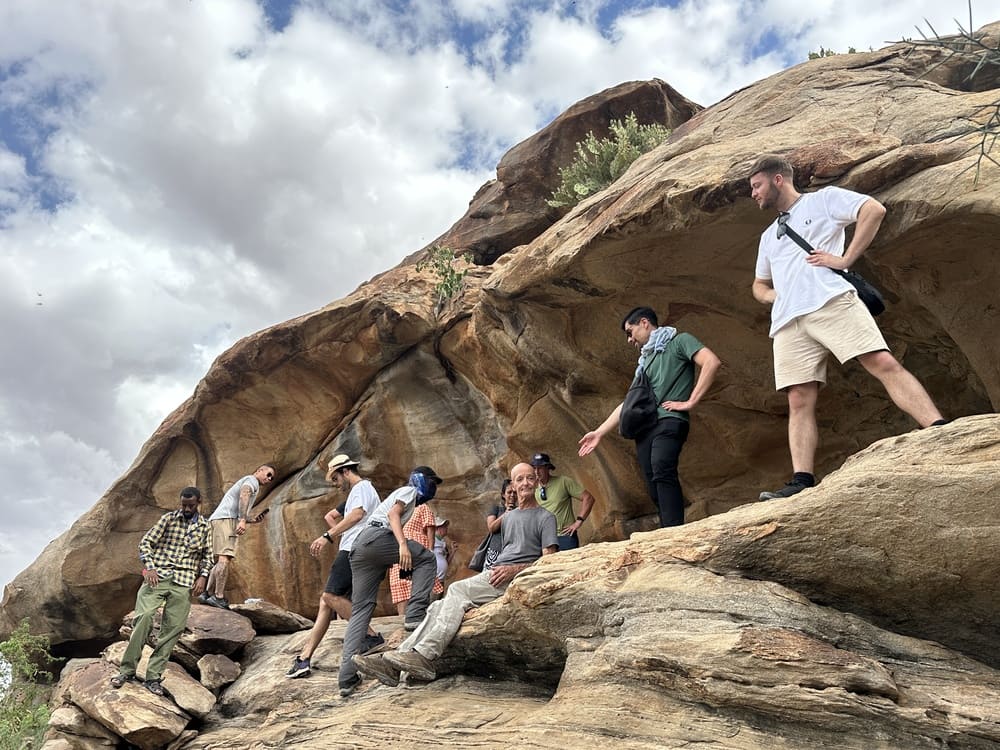
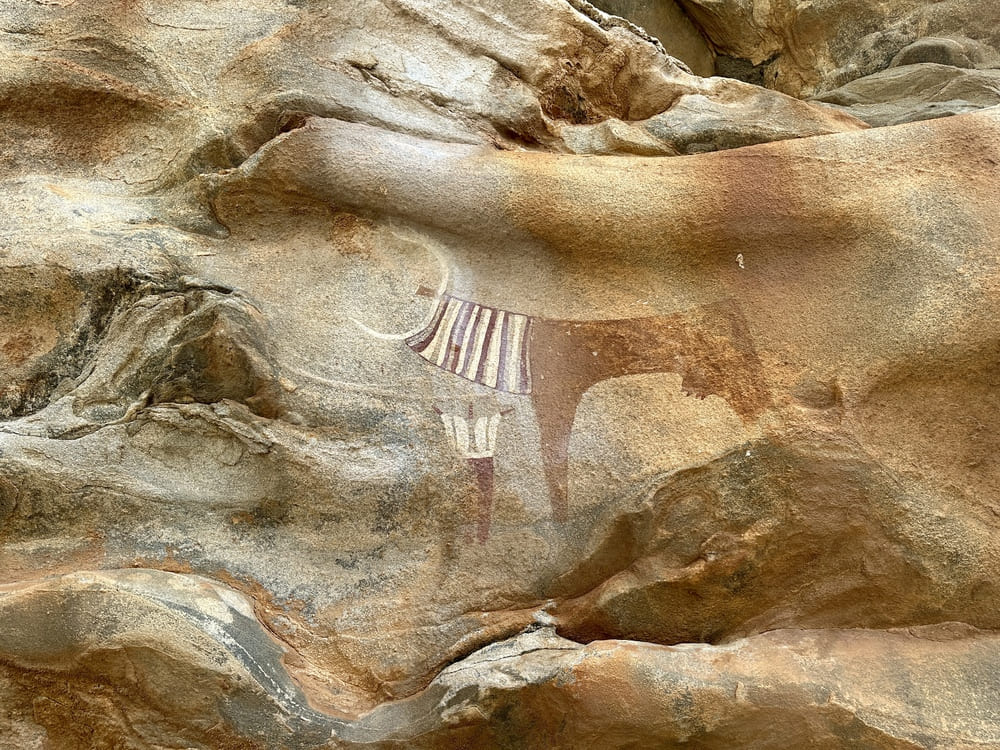
A brief history of its discovery
Although Laas Geel had been known to local pastoral communities for generations, it was never documented by archaeologists until the French archaeological mission led by Xavier Gutherz visited in November and December 2002. Their visit was part of a broader effort to inventory potential sites of historical importance in the Somali territories, funded by the European Union and coordinated through the Institute of Research and Development in France.
Upon being shown the shelters by local guides, the team was astonished to find dozens of panels in an exceptional state of preservation. Their findings were promptly documented and presented to the Somaliland authorities, who responded by placing the site under basic local protection – though without access to international funding, formal conservation remains minimal.
In academic circles, the site was immediately recognised as significant due to both the technical quality of the artwork and the cultural implications it held for early pastoralist societies in Northeast Africa. Yet because Somaliland is not recognised as a sovereign country by the United Nations, its capacity to lobby for formal protection or international aid for conservation remains extremely limited.
Is Laas Geel a UNESCO World Heritage Site?
No, and not for lack of merit.
Laas Geel is not currently a UNESCO World Heritage Site, largely because Somaliland lacks international recognition, and thus cannot independently submit a nomination to UNESCO. In theory, Somalia could submit the site under its national heritage list, but given the complex political relationship between Mogadishu and Hargeisa, no such effort has been made.
This leaves Laas Geel in an unusual predicament: it is a world-class cultural site, and UNESCO experts monitor it, yet it sits outside the global systems of protection and funding that help preserve sites like it. For now, its isolation has been its greatest safeguard. The lack of mass tourism and the difficulty in accessing the site have helped preserve its integrity, though that cannot be relied upon forever.
How to visit Laas Geel
All visits to Laas Geel must be made with a permit, which is arranged through Somaliland’s Ministry of Tourism. Travellers must also be accompanied by an armed escort, a precautionary requirement enforced by local authorities. Our Horn of Africa Tour includes all the logistics for visiting Laas Geel safely and legally.
The walk to the shelters takes about 15–20 minutes from the vehicle drop-off point. The terrain is rocky but not steep, and the shelters are arranged across several elevations. Most of the key panels are concentrated under a few large overhangs near the base of the granite hill. A local caretaker typically accompanies visitors and will point out individual motifs, many of which are easy to miss at first glance.
Photography is allowed, but touching the walls is strictly prohibited. There are no fences, glass, or artificial lighting. Laas Geel is not a museum or a reconstructed heritage park. It is an open-air prehistoric sanctuary that has somehow survived millennia of time, climate, and even war. It is one of the few sites in Africa where visitors can still view ancient art in situ, unmediated and uncommodified.
